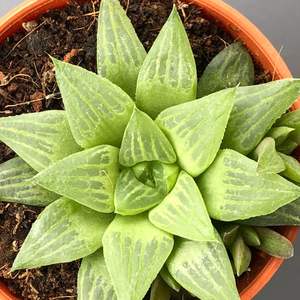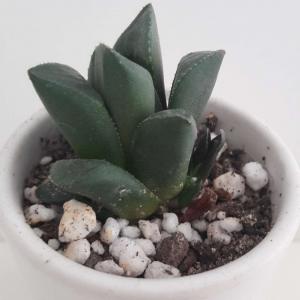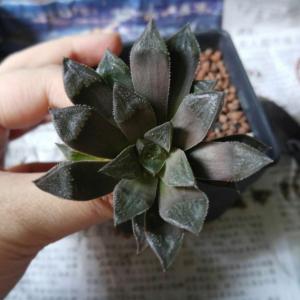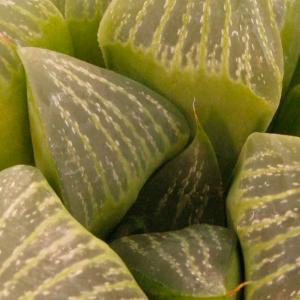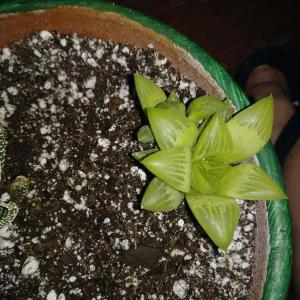植物经验
详细说明
Haworthia retusa is a small, rosette forming succulent perennial, up to 4 inches (10 cm) tall. The leaves are very thick, triangular, translucent, green in color, up to 3.1 inch (8 cm) long and up to 0.8 inch (2 cm) wide. Flowers are small, tubular and white in color, in racemes up to 20 inches (50 cm) tall, in late spring to summer.
How to Grow and Care
Haworthia are not considered difficult houseplants to grow—if you can keep a pot of aloe alive on a windowsill, chances are you can do the same with a dish of Haworthia. As with all succulents, the most dangerous situation is too much water—they should never be allowed to sit in water under any circumstances. At the same time, these decorative little plants can be grown in interesting containers such as tea cups and even miniature baby shoes. If you’re given a Haworthia in such a container, make sure the container had adequate drainage. If it doesn’t, it might be a good idea to pop the plant out of its container and add a layer of gravel to the bottom to reduce the wicking action of the soil above. Finally, look out for sunburned spots on your plants.
----------
How to Grow and Care
Locate your Cathedral Window Haworthia where it will be exposed to partial shade and bright, indirect light. Partially shaded sites are those that get some shade for at least half the day. Amend the soil, if needed, with sand, pumice or decomposed granite to ensure that it is fast-draining, or purchase a potting soil specifically designed for succulents if you plan to grow your plant indoors. Water your plant just enough to keep its leaves rounded and fleshy. The timing depends on your weather conditions, but Haworthia generally needs little to moderate watering, such as a thorough watering once every 2 or 3 weeks. Fertilize Haworthia lightly with an all-purpose fertilizer one time, at the beginning of the growing season, using half the recommended dose for your other garden plants. Alternatively, feed the plant with a fertilizer specially designed for succulents.
Cut off the small stems and tiny flowers on your Cathedral Window Haworthia after they fade to keep the plant looking neat. Mulch potted Haworthia only for design purposes, using small polished stones or moss.
How to Grow and Care
Haworthia are not considered difficult houseplants to grow—if you can keep a pot of aloe alive on a windowsill, chances are you can do the same with a dish of Haworthia. As with all succulents, the most dangerous situation is too much water—they should never be allowed to sit in water under any circumstances. At the same time, these decorative little plants can be grown in interesting containers such as tea cups and even miniature baby shoes. If you’re given a Haworthia in such a container, make sure the container had adequate drainage. If it doesn’t, it might be a good idea to pop the plant out of its container and add a layer of gravel to the bottom to reduce the wicking action of the soil above. Finally, look out for sunburned spots on your plants.
----------
How to Grow and Care
Locate your Cathedral Window Haworthia where it will be exposed to partial shade and bright, indirect light. Partially shaded sites are those that get some shade for at least half the day. Amend the soil, if needed, with sand, pumice or decomposed granite to ensure that it is fast-draining, or purchase a potting soil specifically designed for succulents if you plan to grow your plant indoors. Water your plant just enough to keep its leaves rounded and fleshy. The timing depends on your weather conditions, but Haworthia generally needs little to moderate watering, such as a thorough watering once every 2 or 3 weeks. Fertilize Haworthia lightly with an all-purpose fertilizer one time, at the beginning of the growing season, using half the recommended dose for your other garden plants. Alternatively, feed the plant with a fertilizer specially designed for succulents.
Cut off the small stems and tiny flowers on your Cathedral Window Haworthia after they fade to keep the plant looking neat. Mulch potted Haworthia only for design purposes, using small polished stones or moss.
花相册 (6)
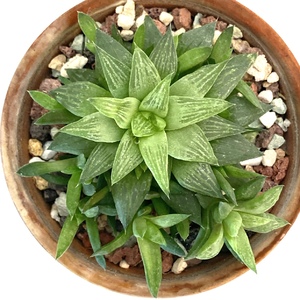
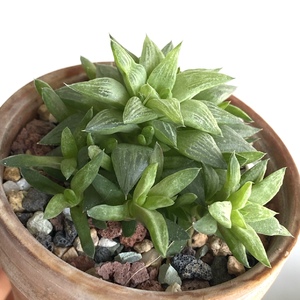
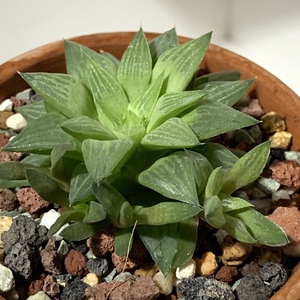

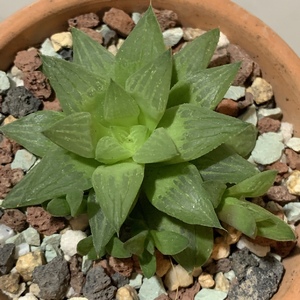
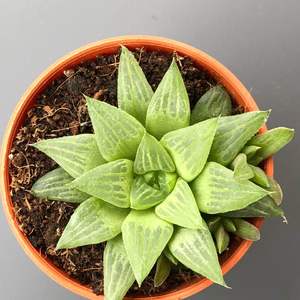
kensong
2019年11月04日

Lots of babies.




kensong
2019年03月02日

So many pups but I'm just going to leave them be.


kensong
2018年12月01日

Pups growing...slowly.


kensong
2018年10月30日

This one almost died. Shrivelled and dried up but moving it indoors and hydrating it regularly revived it and now has pups.


kensong
2018年06月12日

This is my first growing diary.


相关用户


